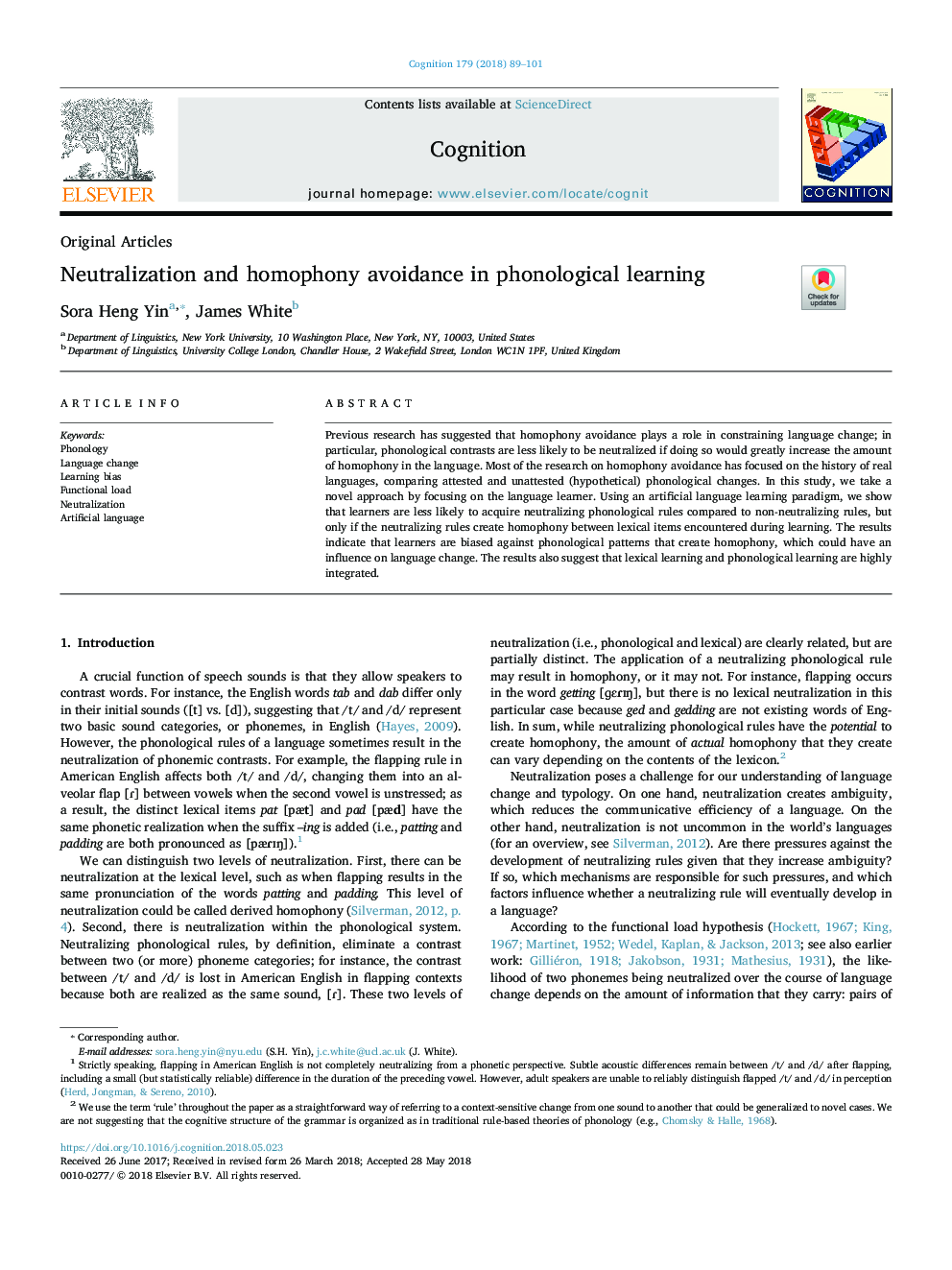| Article ID | Journal | Published Year | Pages | File Type |
|---|---|---|---|---|
| 7285135 | Cognition | 2018 | 13 Pages |
Abstract
Previous research has suggested that homophony avoidance plays a role in constraining language change; in particular, phonological contrasts are less likely to be neutralized if doing so would greatly increase the amount of homophony in the language. Most of the research on homophony avoidance has focused on the history of real languages, comparing attested and unattested (hypothetical) phonological changes. In this study, we take a novel approach by focusing on the language learner. Using an artificial language learning paradigm, we show that learners are less likely to acquire neutralizing phonological rules compared to non-neutralizing rules, but only if the neutralizing rules create homophony between lexical items encountered during learning. The results indicate that learners are biased against phonological patterns that create homophony, which could have an influence on language change. The results also suggest that lexical learning and phonological learning are highly integrated.
Related Topics
Life Sciences
Neuroscience
Cognitive Neuroscience
Authors
Sora Heng Yin, James White,
